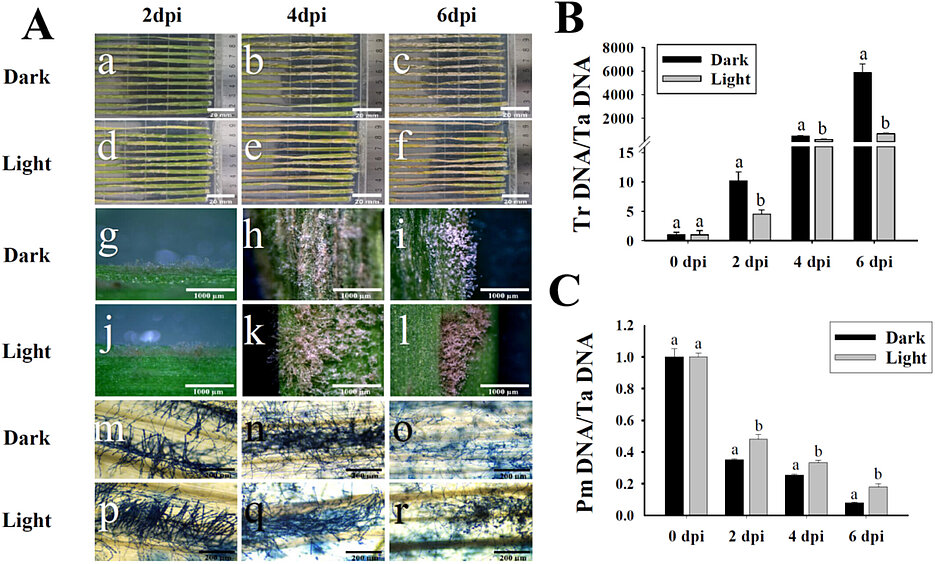White Light Orchestrates Mycoparasitic and Infection Activities by Regulating Expression of Effectors in Trichothecium roseum
28.06.2025White Light Orchestrates Mycoparasitic and Infection Activities by Regulating Expression of Effectors in Trichothecium roseum
Mo Zhu, Fuhai Zhang, Zongbo Qiu, Sujing Zhao, Shiqiang Gao (2025)
Food Science & Nutrition, 2025; 13:e70396
The fungal developmental processes are orchestrated by white light. Despite the genome assembly of Trichothecium roseum being available, the underlying molecular mechanisms of the white light-mediated developments of T. roseum remain obscure. It was found that white light impaired mycoparasitic activities against the wheat powdery mildew fungus and infection processes on tomato fruits in T. roseum. In vitro and in vivo, white light significantly impaired colony expansion and dramatically increased conidiation of T. roseum. RNA-seq analysis of T. roseum conidia was profiled to illustrate the light-mediated expression of genes. A total of 153 and 666 differentially expressed genes were identified between conidia treated with or without white light at 48- and 96-h post inoculation (hpi). Among genome-wide identified effectors, 8 and 36 effectors were differentially regulated by white light at 48 and 96 hpi, respectively. The core effectors, Tro004101, Tro006854, Tro008316, and Tro004104 were commonly downregulated by white light. Notably, white light regulated gene expression in key metabolic pathways including tryptophan metabolism (3 genes) and tyrosine metabolism (5 genes), as well as the HOG-MAPK signaling cascade. These results demonstrated that white light-compromised T. roseummycoparasitic and infection activities might be achieved by regulating specific effector expression and differentially modulating metabolism and HOG-MAPK pathways. The genes detected by our transcriptome analysis may be crucial for mycoparasitism and infection by T. roseum and thus serve as targets for future functional analysis. Our findings provide new insights into the white light-orchestrated developments of an important agricultural and economical fungus and will potentially support efforts for the study of fungal effectors.


